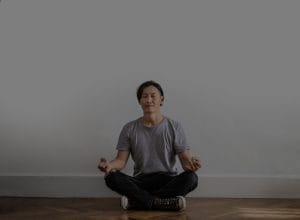**Abstract:** Discover how Feng Shui can transform your meditation space into a sanctuary for inner peace. By aligning your environment with positive energy, you can enhance your mindfulness practice.
Creating a Harmonious Space
When it comes to meditation, the environment plays a crucial role in achieving tranquility and focus. Feng Shui, the ancient Chinese practice of arranging your surroundings to promote harmony, can significantly enhance your meditation experience. By understanding and applying Feng Shui principles, you can create a dedicated space that fosters inner peace and clarity.
Feng Shui emphasizes the flow of energy, or “Chi,” in your environment. A cluttered or chaotic space can disrupt this flow, making it difficult to concentrate during meditation. Therefore, one of the first steps in enhancing your meditation area is decluttering. Remove unnecessary items and keep only those that inspire serenity. This not only opens up the space but also allows positive energy to circulate freely.
Choosing the Right Location
The placement of your meditation space is paramount in Feng Shui. Ideally, it should be located in a quiet area of your home, away from distractions. Consider positioning your meditation corner in a room that receives natural light, as sunlight symbolizes energy and growth. If possible, place your meditation cushion or chair against a solid wall to provide a sense of support and stability.
Additionally, avoid placing your meditation area directly in line with doors or windows, as this can lead to disruptive energy entering your space. Instead, opt for a corner or nook where you feel sheltered and secure. This strategic positioning can enhance your ability to focus and connect with your inner self.
Colors and Elements: Inviting Positive Energy
Incorporating specific colors and elements into your meditation space can further amplify its calming effects. Earthy tones like greens and browns promote relaxation and grounding, while soft blues and whites evoke feelings of peace and clarity. Consider painting your walls in these soothing colors or adding decorative elements that reflect them.
Feng Shui also emphasizes the importance of the five elements: wood, fire, earth, metal, and water. Integrating these elements into your space can create a balanced atmosphere. For instance, incorporating plants (wood) or candles (fire) can energize your meditation area, while water features like a small fountain can instill a sense of tranquility.
Personalizing Your Sanctuary
To truly enhance your meditation practice, personalize your space with items that resonate with you. This could include crystals, incense, or meaningful artwork. Crystals like amethyst and clear quartz are known for their calming properties and can amplify the positive energy in your space. Choose items that inspire you and evoke feelings of peace, allowing your meditation area to become a reflection of your inner self.
Additionally, consider incorporating sound into your space. Soft music, chimes, or nature sounds can create an inviting atmosphere that encourages relaxation. Experiment with different elements until you find the combination that best supports your meditation journey.
Maintaining Your Space
Once you’ve created your ideal meditation environment, it’s essential to maintain it regularly. Keep your space clean and organized to ensure a continuous flow of positive energy. Schedule time each week to refresh your area, whether it’s rearranging elements, dusting surfaces, or simply lighting a candle to reset the energy.
Regularly assess how your meditation space feels. If you notice any stagnation or discomfort, take time to adjust elements or declutter further. Your meditation space should evolve with you, reflecting your changing needs and fostering a sense of peace and serenity.
In conclusion, enhancing your meditation space through Feng Shui is a powerful way to cultivate inner peace. By thoughtfully arranging your environment, choosing harmonious colors, and personalizing your sanctuary, you can create a space that supports your mindfulness practice. Embrace these principles to transform your meditation experience and discover a deeper connection to yourself.










